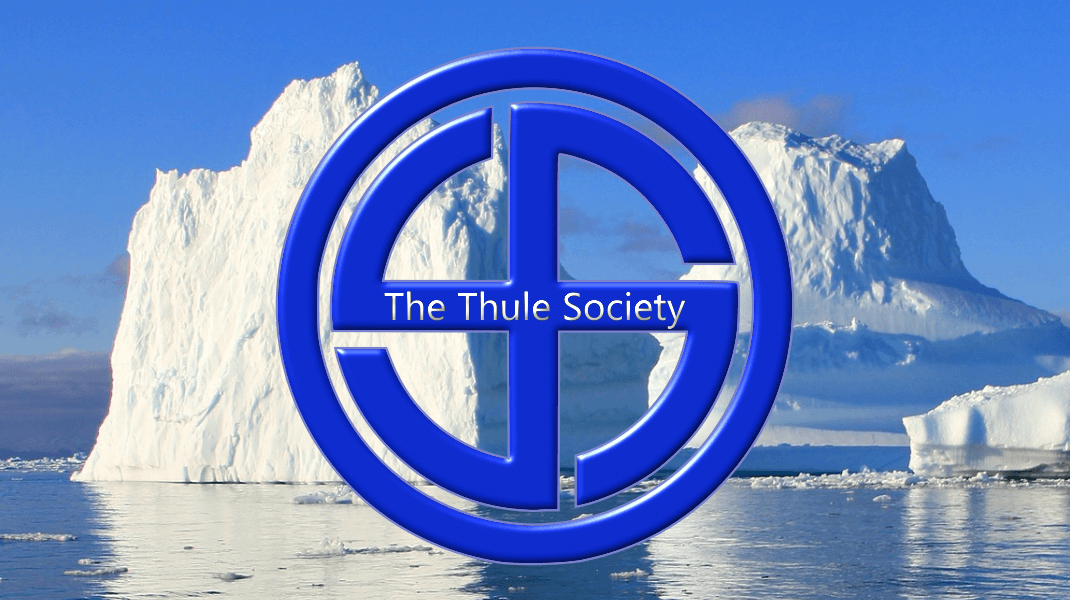Hanging-out in the Pagan and National Socialist Community
Let me start out by saying that I am a White man, I am not a product of race mixing. I also do not pretend to be anything other than White. I am not a “Wigger,” which means that I am not one of those White people that tries to talk and dress like a Black, and neither am I a “Windian,” namely, I am not one of those White people who may or may not have a bit of Native American ancestry who still adopts the trappings of a Native American. No sir, I am OK with being a White man, matter of fact, I am proud of my heritage, but I often feel dismayed that I happen to belong to a group of people that is under attack from all angles these days. I am well aware of the progressing White genocide that is happening on a global level, and I suppose nobody knows every aspect of the attack against White people, but let it be said that people of European decent are being simultaneously attacked along countless pathways.
It is daunting to take any sort of a look at all of the powerful forces that are arrayed against European people; it is not a pretty picture. Although, my feelings of despair are not as overwhelming as they were in years past, I still have some days where I feel crushed by feelings of hopelessness concerning the race and ethnic group that I was born into. So, what should I do as an individual and what should my people do?
One of the first things that comes to mind when thinking about ways to stem the impending tide of European genocide and erasure is to push for community building amongst my people. “Community Building” can take many forms, for some White folks the practice of community building might simply mean establishing a Christian church where people support one-another intensely and strive to create a solid and tight-knit group. For other White people, community building might mean having a network of families that lend their support to one another. Regardless of the outward form, the act of community building is an essential component of White survival for our immediate times and the future.
Being part of a strong community is a good thing because being part of a tight-knit group offers social support to its members and helps meet physical needs like those of protection, food, and housing. Being part of a solid community offers its share of benefits, yet if a solid and supporting communities of European people are to develop and continue, then the members of these groups must also be willing to make personal sacrifices. Any organization or group that stands the test of time must have its share of people who are willing to make sacrifices for the welfare of the group, whether it be a governmental agency or a local bowling league.
Many psychological studies have also proven that people who have made significant sacrifices to belong to a group have a stronger sense of in-group solidarity and exhibit less conflict with other members. Gaining admission to organizations that have very selective acceptance criteria also fosters greater in-group solidarity and creates a heightened sense of pride that stems from being a part of this elite coterie. Gaining admission to a group that has selective admission criteria, yet does not demand a high level of sacrifice to join will typically have strong pride of membership, yet having to make a significant sacrifice to join a community will produces a stronger bond among its people than just having strict selection criteria alone.
So how should strong and solid communities and solid networks of friends and family be created amongst White people? One way is to promote rites of passage and ritualized challenges that will help create strong group bonds. Initiations are an important part of human life, and initiations that demand for people make sacrifices or that present challenges to overcome may be lacking in modern Western societies, yet rites of initiation are not totally dead in modern Western nations. For example, many college fraternities and sororities still practice rather harsh hazing regimens, and gaining membership in elite military units still demands a lot of hard sacrifice. Likewise, prison gangs, motorcycle clubs, mafias, and street gangs all have tough initiation rituals. Additionally, some sports teams still unofficially practice tough hazing regimens.
OK, so what exactly am I proposing as an initiation regimen for Pagan and National Socialist communities and organizations? In this writing, I am proposing that Pagan communities and National Socialists start building groups of people who participate in Suspension Rituals.
What are Suspension Rituals?
Suspension rituals typically involve people being suspended from ropes attached to piercings through their flesh. My first expose to the concept of suspension rituals came when I watched a television program that documented a small group of middle-aged White men living in the San Francisco Bay area who performed suspension rituals. When this documentary aired, I was a young college student and it was the early 1990s, so this whole episode aired quite a while back.
All of the men featured in this documentary were in their 30s, and all of them were quite fit and lean. Each of the suspension ritual practitioners in this documentary were also married family men who worked as engineers. The men featured in this documentary all had tattoos, but none of these fellows were covered in tattoos to an excessive degree. My point is, all of the men that were involved in these suspension rituals seemed quite respectable, and they all looked like people I would want to emulate, so the concept of doing suspensions seemed like a reasonable and cool thing to do.
The rituals I watched on that television program were quite impressive in their own right, and they were also fucking manly. So, what did these guys actually do? One of the rituals I watched involved one member of the group sitting on a chair and while another member pushed a huge custom-made stainless-steel hook through his right calf. The stainless-steel hook did pierce the man’s right calf, but the hook was carefully placed so that the metal rested between the ritual participant’s calf muscle and his leg bones, so the placement of the hook was done to ensure that no major damage would occur. After the hook was pushed through the participant’s lower leg, he was then hung upside down for about two minutes and then taken down. While this man was suspended, he simply hung quietly with is hands folded and his eyes closed — he never made a sound during the whole ritual.
The next ritual I watched involved one man having a similarly large stainless-steel hook pushed through his right shoulder. The shoulder hanging lasted quite a while longer, and this different man also took the whole hanging without a whimper, and he also just hung from that big hook with a contemplative look on his face.
The last ritual I watched was the most difficult of the three. The final and really hard-core hanging involved first having cuts made in the upper chest area of the participant where the tendons for the man’s pectoral muscles met with his upper arm bones. These knife incisions were made to expose tendons. The next step involved having pieces of deer bone inserted under the man’s pectoral tendons, and the final phase of this ritual involved having this fellow suspended by the tendons of his pectoral muscles. The last ritual was admittedly the most painful and demanding, and the man who undertook this ritual did not make any noise, but you could see him grimacing as he was suspended by his tendons.
In the last ritual, the participant only hung until he passed-out from the pain, so he was just suspended off the ground for less than a minute. After the man who did the last ritual was lowered, the deer bones were removed from underneath his tendons, then his wounds were cleaned with some alcohol, and finally he was stitched-up right there on the spot. It was interesting to note that after the last ritual took place the man who came down from that suspension seemed like he was drunk because his speech was slurred and he could not walk, so the pain must have been quite intense.
After the three rituals were completed, the two participants who did the easier hanging were happy to answer some questions from the show’s field reporter. What fascinated me was the fact that both men said that the rituals were painful, but these ceremonies intended to give you what you needed, not what you wanted. Both men said that they did what they did because it helped them stay grounded and it helped them keep their lives in perspective, both men also said that regular participation in these hangings helped make then less stressed and it also made them better husbands and fathers. After watching this television show, I made a solid effort to find this group of men; however, I was never able to track-down any of these guys and I was never able to get a chance to hang from a hook. Finding these guys might have been much easier if I had watched a show like that in the present year, but back then the internet was technically around; however, it was not the same animal that it is today.
What are the Benefits?
One of the most immediate benefits I can see to performing suspension rituals, aside from community building, is toughening. Yep, it seems like a lot of today’s youth could use a bit of toughening by way of chalking-up a few suspension rituals. Fact is, most of White folks live pretty comfortable lives these days, and admittedly, who wants to live like non-whites do in those gunky 3rd-world shit hole countries? None the less, one of the big problems we are seeing these days is success breeding laziness and complacency— Hard times breed strong men —Strong men breed good times — Good times breed weak men — Weak men breed bad times. One of our big problems these days is that we have enjoyed good times since the end of World War II, and these good times have made us a bit too soft, complacent, and lazy — Good times breed weak men.
Will suspending teenaged White kids from hooks make them strong and brave? Maybe, maybe not, but when I look back on my teenage years, I sure think that participating in a few suspension ceremonies would have been a good character builder. Would I have enjoyed being hung from hooks when I was a young whipper-snapper? Hell no, but a proper suspension ritual give you what you need, not what you want.
I also see suspension ceremonies as a way to break out of standard mindsets and a method to open new portals in a person’s consciousness. So, would hanging from a large stainless-steel hook for several hours fill a person’s head with great discoveries? Quite possibly.
I see participating in suspension rituals as being kind of like vision quests. Speaking of vision quests, I remember watching the movie Young Guns when I was in high school. Young Guns was quite a popular Western movie back in the late 1980s, and it packed an all-star cast of the hippest young movie stars from that time. One memorable part of the movie involved the cast of characters feeling like they had lost their way, so the Native American character played by a young Lou Diamond Philips suggests that this group of young men ride their horses out into the desert and then take peyote. What follows is a sequence where the characters wander around the desert and one of them pukes quite a bit, but after the ceremony concludes, they all feel a strong sense of direction and purpose. Hopefully, participation in suspension rituals will give their participants a renewed sense of clarity and purpose in a similar fashion to what happened with the characters in the Young Guns movie after eating a few buttons of peyote.
History of Suspensions
First, let it be said that suspension rituals are basically not of European origin. Yes, there is no solid and documented history of European peoples practicing any types of suspension rituals, but then again, many things that White people use regularly these days are not of European origin. True, more than 80% of all the inventions that define our modern world were invented by White men after the year 1500, but not every significant aspect of our present lives originated in Europe, so I see no major problem in reserving a few hang-outs for people in our own circles. Some of the things we take for granted and use every day that are not of European origin include paper, wheel barrows, fireworks, potatoes, and even the idea of written examinations.
Despite its non-European origins, performing suspension rituals seems like it would be a good fit for the pagan revival communities because they are all about being sort of “Modern Primitives” that Roland Loomis described in his many lectures and television appearances. A small number of preserved bodies from dead Europeans who lived in Paleolithic times have been discovered and one body of a man that was preserved under glacial ice in the Tyrol was found back in 2015. This mummified and frozen old White dude had 61 individual tattoos, so body modifications are a very real facet of paganism. In light of Paganism’s history of performing rites of initiation and practicing body modifications, adding suspension rituals to the list of activities will not be a big leap
The photo posted above shows a modern suspension ritual happening in Iceland. This photo is included to show how a modern suspension ritual might appear. Image courtesy of thisisdarkness.com
According to the website called Painful Pleasures, the practice of suspensions is nothing new; for example, there is a 5,000-year tradition of Hindu devotees practicing suspension and body piercings as shows of religious devotion. According to this same publication, the primary practitioners of the Hindu hang-outs are the Savite sects in the Kerala province. In the Hindu tradition, body perforations have traditionally involved pushing thin metal rods through various parts of the human body; however, getting suspended by these metal pieces is not always part of a devotional piercing ritual. Suspension ritual have also been performed as shows of religion devotion by Buddhists in Thailand and Burma. The British officially outlawed public suspension rituals during the colonial days, and to this day laws prohibiting suspensions still remain on the books in many parts of India; however, public acceptance of Hindu suspension rituals has gradually made a return over time.
The image shown above depicts a Hindu devotional ceremony where a person practices a suspension as a transcendent experience and a show of religious devotion. This image is furnished courtesy of fromlosttofoundtravel.com
The image above shows yet another set of modern-day Indians just hanging-out. Image courtesy of listotop.com
Besides the Indians in India, the Indians of the reservations and casinos also have a long tradition of performing ritual suspensions. As noted in lifesuspended.org, a painter along on the Louis and Clark expedition named George Catlin was the first European to officially describe and document the suspension rituals of the Mandan tribe of Native Americans. The Mandan lived on the banks of the Missouri river in what is today called South and North Dakota. The Mandan practiced a suspension ritual that was a cherished right-of-passage for the up-and-coming young men, and this ritual was called the Okeepa.
The Okeepa involved having a group of young men ritually suspended from piercings through their skin. The strung-up young men who participated in the Okeepa were typically hung until they lost consciousness, and the process also involved having other parts of their bodies pierced and weighed-down with buffalo skulls. Once every ceremony participant was lowered from the hanging, the participants all competed in a race around the perimeter of the village with their buffalo skulls dragging behind them by ropes that were still anchored in their perforated flesh. If an unlucky brave could not finish the race, then the rest of the village would simply drag that poor soul along to the finish line. It was also expected that at least one of the dragging buffalo skulls would rip from each runner’s flesh over the course of the race. The Okeepa was outlawed in 1889, but the practice never really died; it just went underground.
The image shown above is a historical painting from 1837 made by George Catlin that depicts an Okeepa ceremony. Image courtesy of donheald.com
Besides the Okeepa, the Native Americans of the same region also practiced the Sun Dance. Performing the Sun Dance involves first having the skin on a participant’s upper chest pierced by two sections of wood, animal horn, animal bone, or even eagle talons, then the next phase of the ritual consists of pulling on chords that have been attached to the chest piercings. Once the piercings are in, the participants in Sun Dance rituals then pull on the ropes attached to their piercings until the pieces of animal bone or other material rip from their skin.
The image shown above is another painting by George Catlin that dates from the 1830s. This image shows the Sun Dance. Image courtesy of ancientpages.com
The popularization of modern suspension practices is generally credited to a man named Roland Loomis who went by the professional alias “Fakir Musafar.” According to the website fakir.com, Loomis was born in 1930 on an Indian reservation near Aberdeen, South Dakota, and he attended Northern State University in South Dakota where he received a degree in electrical engineering. Loomis may have been an electrical engineer by training, but he also earned a master’s degree in creative writing from San Francisco State University. Despite his training in various areas, Loomis’ career mostly consisted of holding executive positions at various advertising firms in San Francisco and Silicon Valley.
Loomis finally made his appearance as “Fakir Musafar” at the 1977 International Tattoo Convention in Reno, Nevada. After 1977, Loomis continued to run his own advertising agency in San Jose, but he also led many workshops about body piercing. In his later years, Loomis made guest appearances on many national television shows such as NBC’s Faith Daniel’s Show. Most of Loomis’ early explorations with body modifications like brandings and piercings took place in the 1950s and 1960s when he was a spiritual seeker on his off time and an advertising executive by day. For Loomis, exploring body modifications and experiencing extreme rituals from other cultures served as a path of spiritual exploration.
After 1977, Loomis not only made many high-profile appearances on national television shows, he also gave many lectures at conventions of all types and made appearances as a guest lecturer at countless universities. Loomis lectured about tattooing and body piercings of all types, plus he did a lot of research into suspensions. Loomis is credited with developing standard piercing practices that are used around the world to this day, and he is also credited with developing the equipment and procedures used in modern suspensions. Loomis may have died in 2018 at the age of 87, yet his legacy lives on.
I will not claim that Mr. Loomis set a good moral example over the course of his life. For example, he was mixed-up with some pretty shady people and he was heavily involved in the gay S&M scene in San Francisco for many years — among other icky pass times. However, it should come as no surprise that someone who was such an explorer of consciousness and an intellectual maverick would also challenge boundaries in his sex life. Despite his faults, Mr. Loomis is worth mentioning because he developed modern suspension technologies and he brought the concept of suspensions into public consciousness.
The image posted above was taken in the 1960s and is considered to be one of the most memorable and iconic images of Loomis. Photo courtesy of fakir.com
The image above is one of the most published and iconic photographs of Loomis. This photo shows Loomis undertaking a Hindu Shivic piercing ritual. Image courtesy of tatoodo.com
If starting a Pagan or National Socialist group that is focused on performing suspension rituals interests you, then leave a comment in the comments section or contact the Thule Society’s editor at:
james.rousse@protonmail.com










